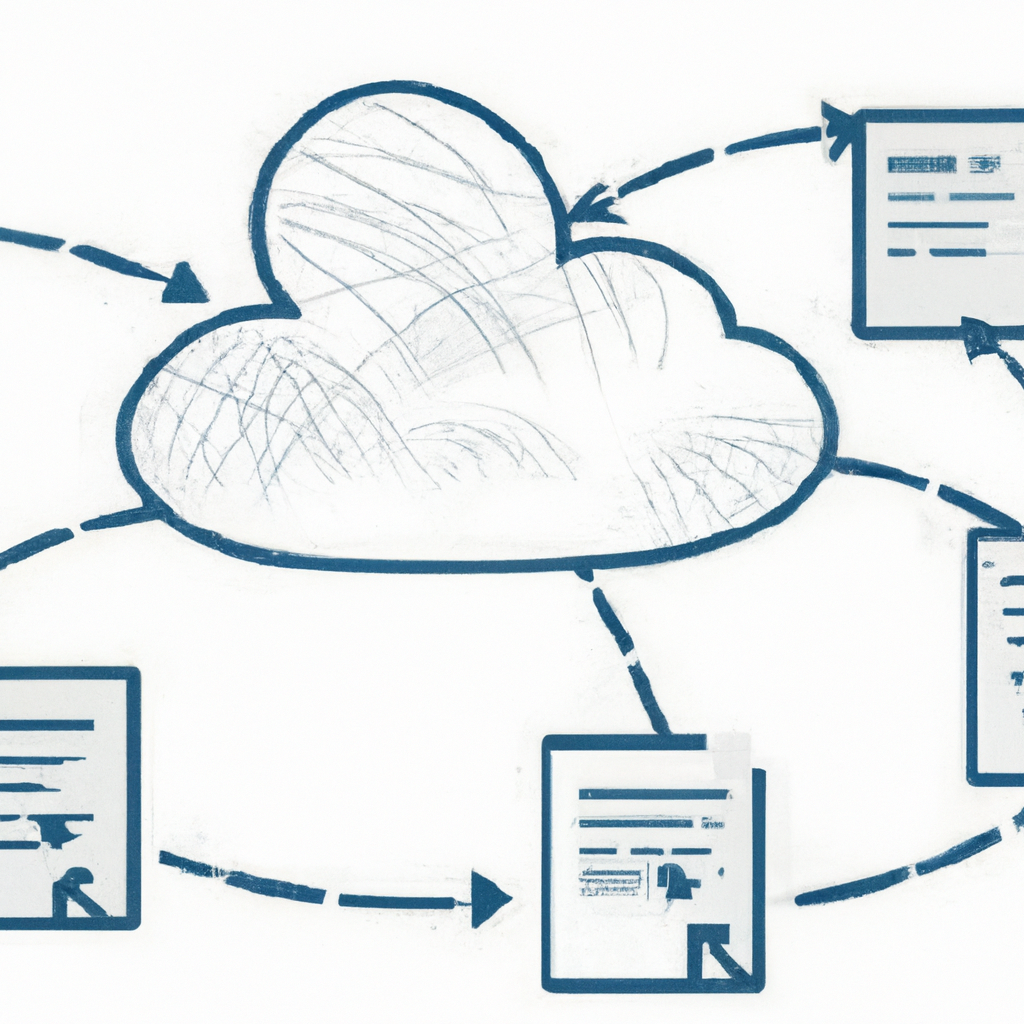Are you looking to take your serverless efficiency to the next level? Look no further than Azure Functions Premium Plan. With this scalable solution, you can unlock the full potential of your Azure Functions, maximizing their performance and efficiency. Say goodbye to limitations and hello to limitless possibilities. In this article, we will explore how the Premium Plan allows you to scale your Azure Functions effortlessly, ensuring seamless execution and optimal resource utilization. So let’s dive in and discover the key benefits of Scaling Azure Functions with the Premium Plan!

Overview
What is the Azure Functions Premium Plan?
The Azure Functions Premium Plan is a service offered by Microsoft Azure that allows you to scale your serverless applications with ease. As the demand for your application increases, the Premium Plan automatically adjusts the resources allocated to your functions, ensuring that you have the necessary capacity to handle the workload. This plan is specifically designed for applications that require high scalability, reliability, and performance.
Benefits of the Azure Functions Premium Plan
The Azure Functions Premium Plan offers several benefits that make it an attractive option for scaling your serverless applications. Firstly, it provides enhanced performance compared to the lower-tier plans, as it utilizes dedicated instances and higher memory options. This ensures that your functions can handle larger workloads and process data faster.
Additionally, the Premium Plan offers automatic scaling and load balancing capabilities, allowing your application to seamlessly handle fluctuations in traffic without any intervention required from your end. This reduces the risk of performance issues and ensures a smooth user experience, even during peak usage periods.
Another significant advantage of the Premium Plan is its flexible pricing model. Unlike other plans that charge based on the number of executions or gigabytes of memory used, the Premium Plan provides a pricing structure based on the number of vCPU-scaled gigabytes used per second (GB-s), which allows you to optimize costs based on your specific workload requirements.
Scaling Azure Functions with the Premium Plan
Understanding scaling in Azure Functions
Scaling is the process of increasing or decreasing the resources allocated to your application based on the demand. In the context of Azure Functions, scaling refers to adjusting the number of instances running your functions to accommodate the workload.
In the case of the Premium Plan, scaling is automatic and dynamic. It ensures that your application has the necessary resources to handle the workload, regardless of the fluctuations in traffic. This allows your functions to scale up or down based on demand, providing optimal performance and cost-effectiveness.
How the Premium Plan enables scaling
The Premium Plan enables scaling by utilizing dedicated instances for your functions. These instances are separate from the shared infrastructure used in other plans, allowing for better isolation and performance. With dedicated instances, your applications can benefit from enhanced processing power and memory capacity, enabling faster execution and better scalability.
Furthermore, the Premium Plan leverages the dynamic scaling feature to automatically adjust the number of instances based on workload. This means that as the demand for your application increases, the plan will dynamically provision additional instances to handle the increased workload. Conversely, when the demand decreases, the plan will scale down and release unnecessary instances, optimizing resource utilization and cost efficiency.
Key features of the Premium Plan for scaling
The Premium Plan offers several key features that facilitate scaling for your Azure Functions. One of the significant features is the ability to scale to unlimited scale units. This means that regardless of the size of your workload, the Premium Plan can allocate the necessary resources to handle it effectively. This is particularly beneficial for applications that experience sudden spikes in traffic or have unpredictable workloads.
Additionally, the Premium Plan enables you to define manual or automatic scaling rules. This gives you the flexibility to customize how your functions scale based on your specific requirements. You can set up rules to scale based on metrics like CPU utilization, queue length, or HTTP requests, ensuring that your application can adapt to changing demands in real-time.
Furthermore, the Premium Plan provides seamless integration with Azure Virtual Network (VNet). This allows you to secure and isolate your functions within your own virtual network, providing an added layer of security and control over your application’s environment. With VNet integration, you can securely access resources within your network and ensure that your functions have controlled access to external resources.

Maximizing Serverless Efficiency
Improving performance with the Premium Plan
The Premium Plan offers various features that enhance the performance of your serverless applications. One of the key performance improvements comes from the use of dedicated instances. By utilizing dedicated instances instead of shared infrastructure, your functions can benefit from enhanced processing power and memory capacity, resulting in faster execution times and improved overall performance.
Additionally, the Premium Plan allows you to choose higher memory options for your functions. This enables you to allocate more memory to your functions, which can lead to improved performance for memory-intensive workloads. By having access to higher memory options, your functions can process larger datasets and handle more complex computations, enhancing the efficiency of your application.
Optimizing resource allocation
Efficiently allocating resources is critical for maximizing the performance and cost-effectiveness of your serverless applications. With the Premium Plan, you have the flexibility to configure the resource allocation for your functions based on their specific requirements.
You can adjust the number of instances and the amount of memory allocated to each function based on the workload. This allows you to optimize resource allocation and ensure that your functions are not over-provisioned or under-provisioned. By fine-tuning the resource allocation, you can eliminate resource bottlenecks, improve response times, and reduce resource wastage, resulting in higher efficiency and cost savings.
Monitoring and fine-tuning for efficiency
To ensure optimal efficiency, it is essential to continuously monitor and fine-tune your serverless applications running on the Premium Plan. Azure provides various monitoring and diagnostics tools that allow you to track the performance of your functions, identify bottlenecks, and make necessary optimizations.
Azure Application Insights is a valuable tool for monitoring your applications on the Premium Plan. It provides real-time insights into the performance and availability of your functions, allowing you to proactively identify and address any issues. By analyzing the telemetry data collected by Application Insights, you can gain valuable insights into resource utilization, request latency, and other performance metrics, enabling you to fine-tune your application for maximum efficiency.
Furthermore, Azure Monitor allows you to set up alerts and notifications based on specific performance metrics. This enables you to receive real-time alerts when thresholds are breached, allowing you to quickly identify and resolve any issues that may impact the performance of your functions.
Use Cases for Scaling Azure Functions
Elastic workloads
One of the primary use cases for scaling Azure Functions with the Premium Plan is handling elastic workloads. Elastic workloads refer to applications that experience significant variations in traffic and workload. These applications require a scalable infrastructure that can dynamically adjust the resources based on demand.
The Premium Plan’s automatic scaling feature makes it an ideal choice for elastic workloads. As the demand for your application increases, the plan automatically provisions additional instances to handle the increased workload. This ensures that your application can scale seamlessly, regardless of the fluctuations in traffic, providing a consistent and reliable user experience.
High-traffic scenarios
Another use case for scaling Azure Functions with the Premium Plan is high-traffic scenarios. Applications that experience high volumes of incoming requests can benefit from the Premium Plan’s ability to scale up to unlimited scale units.
The Premium Plan can handle massive amounts of incoming traffic without any performance degradation. By dynamically provisioning additional instances as the traffic increases, the plan ensures that your application can handle the high request volume effectively. This is particularly useful for applications that require real-time processing of large volumes of data, such as real-time analytics or IoT data processing.
Event-driven applications
Event-driven applications, which respond to events or triggers, often require rapid scaling to handle bursts of activity. This makes them an ideal fit for the Premium Plan, which can automatically scale based on event triggers.
The Premium Plan allows you to define scaling rules based on event metrics, such as queue length or event hub throughput. As these metrics indicate a burst of events, the plan can automatically provision additional instances to handle the increased workload. This ensures that your event-driven application can respond quickly and efficiently to incoming events, without any manual intervention or performance degradation.

Determining When to Upgrade to the Premium Plan
Factors to consider
Choosing the right plan for scaling your Azure Functions depends on several factors. It is essential to consider the following factors when determining whether to upgrade to the Premium Plan:
- Workload requirements: Evaluate your application’s workload requirements, including factors such as expected traffic volume, average response times, and required processing power. If your application requires high scalability and performance, the Premium Plan may be a suitable option.
- Budget: Consider your budget and cost constraints. The Premium Plan offers enhanced performance and scalability but comes at a higher cost compared to the lower-tier plans. Ensure that the benefits outweigh the additional costs for your specific application.
- Traffic patterns: Analyze your application’s traffic patterns. If your application experiences frequent spikes or fluctuations in traffic, the automatic scaling capabilities of the Premium Plan can be advantageous in handling these variations efficiently.
- Integration needs: Evaluate whether your application requires integration with other Azure services or external systems. The Premium Plan offers seamless integration with various Azure services, providing additional capabilities and flexibility for your application.
Calculating cost-effectiveness
Calculating the cost-effectiveness of upgrading to the Premium Plan involves analyzing the performance benefits gained against the additional costs incurred. Consider the following factors when calculating cost-effectiveness:
- Efficiency gains: Estimate the potential efficiency gains from improved performance and scalability. Consider factors such as reduced response times, increased throughput, and better user experience. Quantify these gains to determine their impact on your application’s value.
- Cost savings: Identify potential cost savings associated with resource optimization and better resource allocation. By fine-tuning the resource allocation, you can avoid over-provisioning and reduce unnecessary costs.
- Cost comparison: Compare the cost of the Premium Plan with the estimated costs of the alternatives. Consider factors such as the number of executions, memory usage, and other cost components specific to your application.
By considering these factors and performing a cost analysis, you can determine whether upgrading to the Premium Plan is cost-effective for your specific use case.
When to consider other options
While the Premium Plan offers significant benefits for scaling Azure Functions, there may be scenarios where other options are more suitable. Consider the following situations when assessing whether to explore alternative options:
- Predictable workloads: If your application experiences a consistently predictable workload with minimal fluctuations, lower-tier plans might be more cost-effective and sufficient for your needs. Manual scaling or fixed-instance plans may provide a more cost-efficient solution.
- Budget constraints: If your budget constraints are exceptionally tight, and the additional performance and scalability provided by the Premium Plan are not essential for your application, exploring lower-tier plans or alternative serverless offerings may be more suitable.
- Minimal integration needs: If your application has minimal integration needs with other Azure services or external systems, and the performance and scalability requirements are modest, lower-tier plans or other serverless offerings might provide a more cost-effective solution.
It is crucial to evaluate your specific requirements and constraints to determine the most suitable plan for your scaling needs.
Deploying Azure Functions with the Premium Plan
Choosing the appropriate deployment option
When deploying Azure Functions with the Premium Plan, you have several deployment options to choose from. The choice of deployment option depends on your specific requirements, preferences, and existing setup. Consider the following deployment options:
- Azure Portal: Deploying through the Azure Portal provides a user-friendly graphical interface that allows you to easily create and manage your functions. This option is suitable for developers who prefer a visual environment and want to quickly get started with deploying their functions.
- Azure CLI: Azure CLI is a command-line interface that allows you to deploy and manage your functions using command-line commands. This option is ideal for developers who prefer the flexibility and efficiency of command-line tools.
- Visual Studio Code: If you prefer working with Visual Studio Code, you can leverage the Azure Functions extension to deploy and manage your functions. This option provides an integrated development environment (IDE) for building and deploying serverless applications.
- Azure DevOps: Azure DevOps is a comprehensive set of development tools and services that enables end-to-end automation of your application’s lifecycle. You can use Azure DevOps to deploy and manage your functions with the Premium Plan, ensuring continuous integration and deployment of your serverless applications.
The choice of deployment option depends on your familiarity with the tools, your preferred development environment, and the level of automation required for your deployment process. Evaluate each option and choose the one that best suits your needs.
Configuring and managing Azure Functions with the Premium Plan
Once you have deployed your Azure Functions with the Premium Plan, it is important to properly configure and manage them to ensure optimal performance and scalability. Consider the following configuration and management tasks:
- Scaling settings: Configure the scaling settings for your functions to ensure they can handle the expected workload. Define the scaling rules based on metrics such as CPU utilization, queue length, or HTTP requests. Experiment with different scaling configurations to find the optimal settings for your application.
- Monitoring and diagnostics: Set up monitoring and diagnostics for your functions to gain insights into their performance and troubleshoot any issues. Leverage Azure Application Insights and Azure Monitor to monitor the health of your functions and receive real-time alerts when performance metrics deviate from the expected thresholds.
- Infrastructure optimization: Continuously optimize the infrastructure settings for your functions to ensure efficient resource allocation. Fine-tune the number of instances and the amount of memory allocated based on workload requirements. Regularly analyze the resource utilization and make necessary adjustments to eliminate any bottlenecks and optimize costs.
- Security and compliance: Implement appropriate security measures to protect your functions and data. Utilize Azure Virtual Network (VNet) integration to secure and isolate your functions within your own virtual network. Implement access controls, identity and access management, and encryption mechanisms to ensure compliance with regulatory requirements.
By configuring and managing your Azure Functions appropriately, you can ensure that they operate at peak performance, experience high scalability, and adhere to the security and compliance standards.

Managing Scale and Performance
Scaling up and down based on demand
One of the key benefits of the Azure Functions Premium Plan is its ability to scale up and down automatically based on demand. As the demand for your application increases, the Premium Plan will automatically provision additional instances to handle the increased workload. Conversely, when the demand decreases, the plan will scale down and release unnecessary instances.
To ensure effective scale management, consider the following best practices:
- Define appropriate scaling rules: Define scaling rules based on metrics that are relevant to your application’s workload, such as CPU utilization, request queue length, or event throughput. Experiment with different scaling configurations to find the optimal rules for your application.
- Monitor scaling performance: Regularly monitor the scaling performance of your application. Ensure that the scaling rules are triggering appropriately and provisioning the necessary resources in a timely manner. Analyze historical scaling data to identify any patterns or anomalies that may require adjustments to the scaling configuration.
- Manual intervention when required: While the automatic scaling feature of the Premium Plan is designed to handle most scaling scenarios, there may be situations where manual intervention is necessary. Monitor the performance of your functions and be prepared to manually adjust the scaling settings if required, especially during unpredictable or rapidly changing workloads.
By effectively managing scale based on demand, you can ensure that your application always has the necessary resources to handle the workload, while optimizing costs and maintaining performance.
Ensuring high availability and reliability
High availability and reliability are critical for any application, and the Azure Functions Premium Plan offers features and capabilities to ensure that your functions operate seamlessly without downtime. Consider the following best practices for ensuring high availability and reliability with the Premium Plan:
- Design for redundancy: Design your application with redundancy in mind. Distribute your functions across multiple instances and regions to ensure that if one instance or region fails, the application remains available and functional.
- Implement fault-tolerant architectures: Implement fault-tolerant architectures that can handle failures gracefully. Utilize features such as Azure Functions durable functions, which provide built-in support for managing long-running workflows and recovering from failures.
- Set up health checks and performance monitoring: Implement health checks and performance monitoring for your functions. Regularly monitor the health and availability of your functions, and proactively address any issues that may impact their performance.
- Configure auto-recovery: Configure auto-recovery settings for your functions to automatically recover from failures or unexpected errors. Set up automatic retries and error handling mechanisms to ensure that your functions can recover from transient errors and continue processing.
By following these best practices, you can ensure that your functions on the Premium Plan are highly available and reliable, providing uninterrupted service to your users and customers.
Implementing auto-scaling
Auto-scaling is a key feature of the Azure Functions Premium Plan and is essential for efficiently managing the resources allocated to your functions. By automatically provisioning additional instances when the demand increases and releasing unnecessary instances when the demand decreases, auto-scaling ensures that your application can handle the workload effectively while optimizing costs.
To implement effective auto-scaling, consider the following best practices:
- Define appropriate scaling rules: Define scaling rules that align with your application’s workload patterns and performance requirements. Consider metrics such as CPU utilization, queue length, or event throughput when defining the scaling rules. Experiment with different scaling configurations to find the optimal rules for your application.
- Regularly review and adjust scaling settings: Regularly review the performance and efficiency of the auto-scaling feature. Monitor the performance metrics and adjust the scaling settings if required. Analyze historical scaling data to identify patterns and make adjustments to optimize the scaling configuration.
- Test scaling behavior: Test the scaling behavior of your functions to ensure that they can handle both gradual and sudden increases in demand. Perform load testing and simulate peak traffic to validate the scalability of your application and make any necessary adjustments to the scaling rules or resource allocation.
By effectively implementing and fine-tuning auto-scaling, you can ensure that your functions scale seamlessly and maintain optimal performance, regardless of the fluctuations in traffic.
Integrating Azure Functions with Other Azure Services
Utilizing Azure Event Grid for event-driven architectures
Azure Event Grid is a fully managed event routing service that simplifies the development of event-driven architectures. It allows you to publish and subscribe to events from various Azure services and custom sources, enabling seamless integration with Azure Functions.
By integrating Azure Functions with Azure Event Grid, you can build event-driven applications that can respond to events in real-time. Azure Functions can act as event subscribers, processing the events and triggering the associated functions. The Premium Plan’s automatic scaling capabilities ensure that your functions can handle rapid bursts of events effectively.
Connecting to Azure Storage for data processing
Azure Storage provides scalable and cost-effective storage options for your applications. By connecting Azure Functions with Azure Storage, you can leverage its capabilities for efficient data processing and storage.
Azure Functions can interact with Azure Storage via bindings, which simplify data access and processing. You can use bindings to read from or write to Azure Storage services such as Azure Blob storage, Azure Queue storage, or Azure Table storage. This allows your functions to perform operations such as reading and writing files, processing queues of messages, or querying structured table data.
Integrating Azure Functions with Azure Storage enables you to leverage the scalability and durability of Azure Storage for your data processing needs. The Premium Plan’s enhanced performance and scaling capabilities ensure that your functions can handle large volumes of data efficiently.
Interacting with Azure Application Insights for monitoring and diagnostics
Azure Application Insights is a powerful application performance monitoring (APM) service provided by Azure. It allows you to monitor the performance, availability, and usage of your applications, including Azure Functions.
By integrating Azure Functions with Azure Application Insights, you can gain valuable insights into the performance and behavior of your functions. Application Insights can collect telemetry data from your functions, including metrics such as response times, request rates, and dependency calls. It can also provide comprehensive logs, traces, and exceptions for troubleshooting and diagnostics.
By analyzing the telemetry data collected by Azure Application Insights, you can identify performance bottlenecks, troubleshoot issues, and optimize the efficiency and reliability of your functions on the Premium Plan. This allows you to proactively monitor and manage the health of your applications, ensuring maximum uptime and user satisfaction.

Best Practices for Scaling and Efficiency
Designing functions for scalability
When developing Azure Functions for scalability, it is important to consider the following best practices:
- Keep functions stateless: Avoid storing any state within your functions. Instead, utilize external storage options, such as Azure Storage, to persist the necessary data. This allows your functions to remain stateless, making it easier to scale and distribute the workload across instances.
- Use asynchronous patterns: Utilize asynchronous programming patterns whenever possible. Asynchronous execution allows your functions to handle multiple requests simultaneously, improving the overall throughput and scalability.
- Minimize dependencies: Minimize the dependencies of your functions on external services or resources. Reducing dependencies improves the overall resilience of your functions and prevents potential performance bottlenecks.
- Optimize data processing: Implement efficient data processing techniques, such as batch processing or parallelization, to improve the performance and scalability of your functions. Break down large tasks into smaller, parallelizable units to maximize resource utilization.
By following these best practices, you can design your functions to be highly scalable, allowing them to efficiently handle fluctuations in workload and respond to increased demand.
Implementing optimal scaling patterns
When scaling Azure Functions with the Premium Plan, consider implementing the following scaling patterns to optimize performance and resource utilization:
- Horizontal scaling: Horizontal scaling involves adding more instances of your functions to handle increased workload. This pattern is ideal when your application experiences frequent variations in traffic volume. By horizontally scaling your functions, you can distribute the workload across multiple instances, minimizing the risk of resource bottlenecks and improving overall performance.
- Vertical scaling: Vertical scaling involves increasing the compute resources allocated to your functions, such as memory or CPU capacity. This pattern is suitable when your functions require additional resources to handle higher memory requirements or more compute-intensive workloads. By vertically scaling your functions, you can improve response times and ensure optimal performance for memory-intensive tasks.
- Combination scaling: Combining horizontal and vertical scaling can help optimize the performance and cost-effectiveness of your functions. By horizontally scaling your functions to handle workload fluctuations and vertically scaling them to meet specific performance requirements, you can ensure that your functions have the necessary resources at all times.
By implementing optimal scaling patterns based on your specific application requirements, you can maximize performance, improve scalability, and optimize cost efficiency for your Azure Functions.
Leveraging caching and pre-warming
Caching and pre-warming techniques can significantly improve the performance and efficiency of your Azure Functions. Consider the following best practices:
- Caching: Implement caching mechanisms to store frequently-accessed data. By caching data close to the functions, you can reduce the number of costly external calls and improve response times. Azure provides various caching options, such as Azure Cache for Redis or Azure CDN, which you can integrate with your functions to optimize performance.
- Pre-warming: Pre-warming involves proactively initializing your functions to ensure that they are ready to handle requests immediately. By triggering a pre-warm event or scheduling periodic requests to your functions, you can keep the necessary instances warm and eliminate the startup overhead. This can significantly reduce the response times for your functions, especially during bursts of traffic.
By leveraging caching and pre-warming techniques, you can improve the efficiency and responsiveness of your Azure Functions, providing a better user experience and optimizing resource usage.
Real-world Examples of Scaling Azure Functions
Case study: Scaling a real-time chat application
A real-time chat application requires high scalability to handle a large number of concurrent users and deliver messages in real-time. By utilizing the Azure Functions Premium Plan, the application can seamlessly scale to accommodate the dynamic traffic patterns.
The automatic scaling feature of the Premium Plan allows the application to handle sudden increases in user activity. As more users join the chat, additional instances are provisioned to handle the increased message processing and delivery. This ensures that the application can maintain real-time communication without any performance degradation.
The Premium Plan’s enhanced performance and higher memory options allow the application to efficiently process and store messages. By leveraging caching mechanisms, commonly accessed user data can be stored close to the functions, reducing the number of database queries and improving response times.
Additionally, the application can integrate with Azure Event Grid to handle event-driven scenarios, such as sending notifications to users when they receive new messages. This ensures that the application can respond to events in real-time, providing a seamless and interactive user experience.
Case study: Processing streaming data at scale
Processing streaming data at scale requires a scalable and efficient architecture. By leveraging Azure Functions on the Premium Plan, you can handle high volumes of streaming data with ease.
The automatic scaling capability of the Premium Plan ensures that the application can handle the rapid ingestion and processing of streaming data. As the incoming data rate increases, additional instances of the functions are provisioned to parallelize the processing, enabling efficient and real-time analysis.
By integrating with Azure Storage, the application can store the streaming data for further analysis and long-term archiving. Azure Functions can be configured to process the stored data asynchronously, ensuring that the application continues to scale and handle incoming data while processing the stored data in the background.
Using Azure Application Insights, the application can monitor the performance and health of the functions, ensuring that any issues with data processing or resource utilization are quickly identified and resolved.
Case study: Implementing a serverless API backend
Implementing a serverless API backend requires a scalable and reliable infrastructure. By leveraging Azure Functions on the Premium Plan, you can build a highly scalable and cost-efficient API backend.
The Premium Plan’s automatic scaling feature ensures that the API backend can handle fluctuations in traffic and provide consistent performance and responsiveness. As the number of requests increases, additional instances of the functions are provisioned, allowing for parallel processing and reducing response times.
By integrating with Azure Virtual Network (VNet), the API backend can be secured and isolated within a private network. This provides an additional layer of security and control, allowing fine-grained access control and ensuring a secure communication channel between the backend and other resources within the VNet.
Azure Functions can also be easily integrated with other Azure services, such as Azure Event Grid or Azure Storage, to enable event-driven scenarios and efficient data processing. This allows the API backend to operate seamlessly with other components within the Azure ecosystem.
By implementing Azure Functions on the Premium Plan for the API backend, you can achieve high scalability, reliability, and performance while minimizing costs and maintenance efforts.
In conclusion, scaling Azure Functions with the Premium Plan is a powerful way to achieve optimal performance and scalability in your serverless applications. By leveraging the automatic scaling capabilities, enhanced performance, and integration options offered by the Premium Plan, you can build highly scalable, efficient, and reliable applications. Whether you are handling elastic workloads, high-traffic scenarios, or event-driven applications, the Premium Plan provides the necessary tools and features to ensure that your application can handle the workload effectively. By following best practices, optimizing resource allocation, and integrating with other Azure services, you can unlock the full potential of Azure Functions for scaling and maximizing serverless efficiency.
